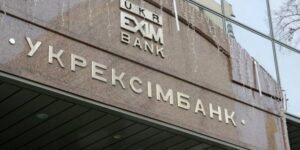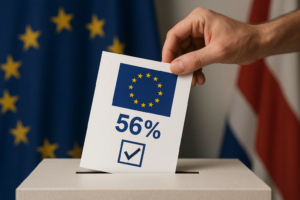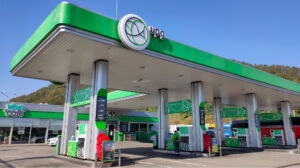
Dniprometiz-TAS LLC (Dnipro), owned by Ukrainian businessman Serhiy Tihipko, intends to conclude a general loan agreement with Ukreximbank (Kyiv) with a credit limit equivalent to UAH 600 million.
According to the company’s report in the NSSMC’s information disclosure system, the general meeting of Dniprometiz-TAS LLC participants on September 4, 2025, decided to grant consent for the company to perform transactions that collectively meet the criteria of a significant transaction, namely, the conclusion of a general credit agreement with JSC Ukreximbank with a credit transaction limit equivalent to UAH 600 million.
It is specified that within the framework of the general credit agreement, it is planned to conclude two credit agreements: on opening a revolving multi-currency credit line with a limit equivalent to EUR 4.1 million and on opening a non-revolving credit line with a limit of EUR 2.5 million.
Consent was also given to the general agreement on the provision of guarantees/counter-guarantees/standby letters of credit, with a limit on guarantee transactions equivalent to UAH 30 million, i.e., a total amount (limit) equivalent to UAH 630 million.
The meeting was attended by company participants who collectively hold 100% of the votes.
As reported, in the first half of 2025, Dniprometiz-TAS increased its net profit by 20.8% compared to the same period last year, to UAH 8.936 million, while net income grew by 8%, to UAH 1 billion 756.245 million.
In 2024, Dniprometiz-TAS increased its net profit by 47.7% compared to 2023, to UAH 14.197 million from UAH 9.610 million, and its net income by 22.7%, to UAH 3 billion 285.688 million. At the same time, the company’s undistributed profit at the end of 2024 amounted to UAH 263.048 million.
Dniprometiz-TAS manufactures metal products from low-carbon steels. The company’s capacity is 120,000 tons of products per year.
T.A.S. Overseas Investments Limited (Cyprus) owns a 98.6578% stake in Dniprometiz LLC.
The authorized capital of Dniprometiz-TAS LLC is UAH 83.480 million.

In January-June 2025, the IMC agricultural holding company received a net profit of $51.4 million, which is 39% more than in the same period last year ($21.5 million), according to a report published on the agricultural holding company’s website.
According to the financial statements, operating profit doubled to $54.7 million, and EBITDA rose 72% to $64.7 million. At the same time, revenue decreased by 22% to $83.9 million. Cost of sales decreased by 20% to $66.4 million, and selling expenses more than doubled (-58%).
The revenue structure in the first half of the year by crop was as follows: corn — $82.1 million (+25% y/y), sunflower — $0.9 million (-94% y/y), wheat — $0.5 million (-98% y/y), other crops – $0.5 million (-33% y/y). Thus, corn accounted for over 97% of the company’s revenue.
Profit before tax amounted to $52.3 million (+142% y/y).
IMK Agroholding is an integrated group of companies operating in the Sumy, Poltava, and Chernihiv regions (northern and central Ukraine) in the crop production, elevators, and warehouses segments. The land bank is 116,000 hectares, storage capacity is 554,000 tons, and the 2024 harvest is 864,000 tons.
IMK ended 2024 with a net profit of $54.54 million, compared to a net loss of $21.03 million in 2023. Revenue grew by 52% to $211.29 million, gross profit quadrupled to $109.10 million, and normalized EBITDA increased 25-fold to $86.11 million.

According to a special Eurobarometer survey published on September 2, 2025, 56% of EU citizens support further enlargement of the Union, i.e., the admission of new countries to the EU.
Support is particularly high among young people: among respondents aged 15 to 39, about two-thirds believe that new countries should join the EU as soon as they meet the necessary conditions.
Also, 56% believe that their own country will benefit from enlargement; at the same time, 67% admit that they are not sufficiently informed about enlargement policy.
The survey was conducted as part of the Special Eurobarometer and Perception Surveys commissioned by the European Commission. Thousands of respondents in EU countries and candidate countries were surveyed using a standardized face-to-face or online questionnaire, depending on the country. The aim was to gauge the level of support for enlargement, perceptions of the EU, and the degree of awareness among citizens.

OTP Bank forecasts significant growth in renewable energy lending next year, said Alla Biniashvili, a member of the bank’s board.
“What do we think will be the driver? Definitely renewable energy. It is already emerging, mostly in state-owned banks, but all other banks are also prioritizing the financing of energy security and renewable energy. And we expect a significant increase in its share in our portfolio next year, as well as in the portfolios of other banks,” she said at the Global Outlook: Strategic Momentum conference organized by the European Business Association (EBA) in Kyiv on Friday.
As Biniashvili noted, the banking sector is currently characterized by high liquidity, but companies also hold significant balances in their accounts due to uncertainty and lack of investment.
According to her, the main sectors for lending currently remain agriculture, food industry, trade, and defense. She noted that banks compete with each other for customers in these industries, lowering rates and offering new terms.
Binashvili named the geopolitical situation, import needs for energy security, lower harvests, and staff shortages as key risks for the banking sector. At the same time, she said that against the backdrop of international guarantees and risk-sharing programs, banks will be able to ensure about 30% growth in lending in 2026.

Investment company Dragon Capital is completing the creation of two new investment funds with a total volume of approximately $609 million, according to the company’s founder and CEO Tomas Fiala.
According to him, the first fund, worth $200 million, will focus on small and medium-sized businesses with a turnover of up to EUR50 million.
“Next month, we will have our first closing at just over $100 million, and the second in 2026, where we will reach $200 million. We are already working on a pipeline of several dozen projects, where we are selecting which companies to invest in, and we are mainly buying majority stakes in companies,” Fiala said at the Global Outlook: Strategic Momentum conference organized by the European Business Association (EBA) in Kyiv on Friday.
According to him, the second fund, worth EUR350 million, will focus on infrastructure investments. Its first project will be in the energy sector, where Dragon Capital has already invested its own funds.
By the end of the year, the company plans to launch 65 MW of generating capacity—batteries and gas piston stations—and is also preparing projects for another 200 MW, which are planned to be implemented by the end of next year.
Fiala also said that last month the company invested more than UAH 300 million in the capital of its bank through subordinated debt. In addition, Dragon Capital invested $30 million in the energy sector in 2025 and expects to attract a loan from the EBRD for EUR21 million by the end of the year to increase its investment in this sector to over $50 million.
At the same time, he noted that private investors are still cautious due to the risks of war, while the main participants in the funds are currently international financial organizations and Scandinavian sovereign wealth funds.
“There are those who are watching, but they will mostly be ready to make the investment itself, either if it is very cheap or after the war, after the truce, because the risks are high that something will fly in — we ourselves had about five of our assets destroyed at the beginning of the war, and even recently,” he added.
Dragon Capital is one of the largest investment groups in Ukraine in the field of investment and financial services, providing a full range of investment banking and brokerage services, direct investments, and asset management for institutional, corporate, and private clients. The company was founded in 2000 in Kyiv. According to founder and CEO Tomas Fiala, the group’s investment portfolio currently includes nearly 50 different companies or real estate projects. Between 2015 and 2021, the company invested approximately $700 million in Ukraine, excluding reinvestments, and plans to invest $100 million in 2025.

At its meeting on September 4, the Antimonopoly Committee of Ukraine (AMCU) granted permission to the private enterprise (PE) Ukrpaletsystem, which operates the UPG gas station network, to acquire control by leasing another 75 gas stations belonging to the ANP and Avias networks, which are part of the Privat group of companies.
This was announced by the head of the Antimonopoly Committee of Ukraine (AMCU), Pavlo Kyrylenko, on his Facebook page.
“75 applications for permits for Ukrpaletsystem to acquire control over 75 single property complexes—gas stations—were considered at today’s meeting. Positive decisions were made on all applications,” he wrote.
In particular, the AMCU granted Ukrpaletsystem permission to lease 75 gas stations belonging to 14 companies of the Privat group: Aylong Evolution LLC, Albiland, Angel Capital, Eurotrade Expo, Jasmine Trade, Corso Town, Like Invest, Leader Finance, Newport Holding, Perspektiva Pro, Sirius Gold, Sky Project, Sorella Oil, and Taros Group.
As reported, on August 14, the AMCU granted Ukrpaletsystem permission to acquire control by leasing 46 gas stations belonging to the Privat group, 47 on July 31, and 34 on July 10.
According to AMCU Chairman Pavlo Kyrylenko, the UPG gas station chain plans to become the third key player in the fuel market alongside WOG and OKKO.
“UPG has submitted numerous applications to the committee for permission to concentrate. Based on these, we can conclude that it has ambitious plans to become the third key player in the market alongside WOG and OKKO,” he said in an interview with Neftorink.
As he explained, UPG’s strategy is to acquire assets in stages: first by leasing, then by purchasing them.
“According to our calculations, this involves more than 550 properties. But in order to acquire them, the company must again apply to the AMCU and obtain another concentration permit.
It is necessary to closely monitor how this process will take place,” he said.
UPG (Ukrainian Petrol Group) is a Ukrainian network of fuel and recreation complexes operating in 20 regions of the country. It has its own logistics infrastructure, works with direct fuel supplies from leading refineries in Europe and the US, and maintains uniform quality standards at all stages: from laboratory testing of each batch and equipment maintenance to standardized recipes at VIVO cafe.
The company was founded by Volodymyr Petrenko.
AMCU, gas station, PRIVAT, UPG